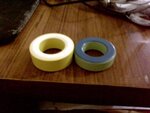picgak
Advanced Member level 1

- Joined
- Oct 13, 2011
- Messages
- 407
- Helped
- 102
- Reputation
- 204
- Reaction score
- 102
- Trophy points
- 1,323
- Activity points
- 3,177
Hi goldsmith, sam,
Your thread is going on very interesting, I am learning from you.
regards ani
Your thread is going on very interesting, I am learning from you.
regards ani






